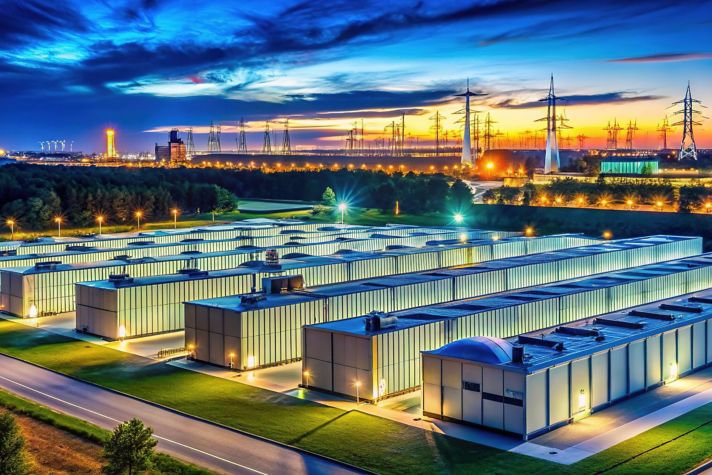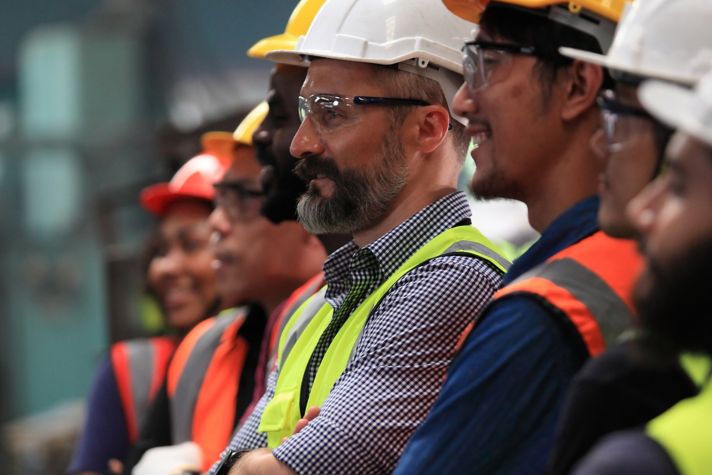CCC’s story began in 1974, when two Russian-Jewish refugees from the Soviet Union, Naum Staroselsky and Alex Rutshtein, came to Des Moines, Iowa. They were mechanical engineers, and the original ideas on the control of turbomachinery came from their work with large air compressors in the Soviet steel industry.
Staroselsky and Alex Rutshtein, came to Des Moines, Iowa. They were mechanical engineers, and the original ideas on the control of turbomachinery came from their work with large air compressors in the Soviet steel industry.
The company was founded when a Des Moines businessman, who owned several textile factories, decided to invest in a strange idea: how to control compressors. At the time, it may have seemed a risky decision to say the least. But it helped that his son, a chemical engineer by training, wanted something exciting to do and was bored with the textile business.
For several years, the company had no revenue; the original plan of selling ideas and know-how did not work. Then, a decision was made to produce a controller with the ideas — the algorithms — embedded within. This proved more successful, and by 1979 orders started to trickle in.
The First Wave of Growth

During the initial period of the company’s existence, there were many occasions when all seemed lost, and one of the original founders left. Nevertheless, the tenacity, vision and resourcefulness of Naum Staroselsky and a small group of people at CCC allowed them to overcome many challenges — and by the mid-1980s, they had built a viable business. CCC was lucky to have Saul Mirsky, who made many invaluable technical contributions, and John Hampel, who built the CCC Sales organization and under whose leadership CCC made important breakthroughs with large oil and gas companies such as Exxon and Chevron.
In the mid 80’s CCC concluded an agreement with Honeywell Europe for Honeywell to sell and service CCC systems in Europe. The cooperation produced good results, including expanded sales in Europe, particularly with the oil and gas boom in the North Sea. Amsterdam Honeywell Service Center became the base of the Honeywell field service group for CCC control systems, which expanded significantly over the years. CCC benefited greatly from the well-qualified personnel at the Honeywell center, and many of the engineers continued with CCC directly in the 2000s and had — or are still having — distinguished careers at our company. Today, we are back with Honeywell, and Amsterdam continues to be a critically important part of the field service and sales organization.
The main driving force behind CCC’s growth in the 80s and 90s was the notion that turbomachinery control required specialized algorithms and hardware — and as such, it should not be a part of the general-purpose instrumentation. In the early days of CCC, it was not uncommon for the same people to sell, engineer and commission a project. Customers valued the approach where words did not exceed the deeds (or at least not by much), and CCC thrived on repeat business.
From the beginning, CCC’s workforce was a diverse mixture of Russian immigrants and Iowans, two groups with very different temperaments and behaviors. Yet somehow, everyone got along without much trouble — and we did not even have any training! That spirit of cooperation between the people in the company, regardless of position, and unwavering focus on results assured the company’s survival over the years, through many trials and tribulations. Over the years, the company’s diversity grew to include people from the Middle East, Eastern Europe, India and Latin America, all of whom made strong contributions to the success of the business.
Early Technologies

The first controller, PCM, was based on analog elements, though it’s difficult to imagine today that such things existed. The first fully CCC microprocessor-based controller came out in the early 80s. Paul Reinke was one of CCC’s main — at the time, maybe the only — software engineers and one of the first Iowa hires. He created the first version of the software and was soon joined by Iowa Stater Paul Negley. CCC’s Series 3 and 3+ controllers, successful products that gained a significant share of the compressor controls market, followed.
The first programmable fault-tolerant controller, Series 4, was released in the mid-90s. The team that developed Series 4 was led by Bob Sibthorp, another person who played an important role in the success of CCC. Series 4 eventually proved to be a super reliable system. However, the implementation was initially challenging, as it was the first complex hardware/software system for CCC. The introduction of the Series 5 Vanguard in the late 90s was also not without its challenges, but CCC’s engineers doggedly debugged, tested, re-released and eventually resolved the issues.
Decades of Global Expansion

It was during the 90s that CCC became a significant player in the Russian and former Soviet republics (CIS countries) compressor station automation market, mainly with the Russian gas production and transportation monopoly Gazprom. At the time, the market significantly lagged the West and did not have reliable microprocessor-based control systems. CCC expanded its scope and began supplying full unit control systems with gas turbine control and control of auxiliary systems, as well as a Windows-based operator interface that would later become TrainView HMI.
CCC had two divisions: one for Russia and CIS countries, and the other covering the rest of the world (the “West”). The Russian business had a large impact on the company not just from the product mix perspective, but also for the composition of our workforce. Many qualified engineers joined CCC in Russia and Ukraine. The economic situation in those regions was rather depressed, and CCC offered an opportunity to use Western equipment and work for a Western company. Today, some of those engineers in R&D and Field Service are still with the company, continuing to make a valuable contribution to CCC’s business.
Another important development during the 90s was the growing business with Nuovo Pignone in Florence. Pignone compressors dominated in the upstream segment, an area in which CCC was also strong. Honeywell Sales Engineer Antonio Barone in Milan played a key role in fostering the relationship and, later, in building a CCC team in Milan to support the growing business. Today, the Milan office is critical to our continued success in Europe, CIS countries and Africa.
It was also during the 90s that CCC made breakthroughs in the Middle East, which over the years became a vitally important region. At the time, Saudi Aramco and other companies in the region widely used a company called Micon for turbomachinery control. Aramco arranged a comparative test between Micon and CCC — and thanks to our exceptional engineering and field service team efforts, CCC won. This was just one episode of many, and all of them together set the stage for an expansion into the Saudi, UAE and Middle East markets. Today, our exceptional Middle East team dominates the turbomachinery market in the region, which represents the largest regional market for CCC.
CCC also penetrated the Asia Pacific region, where American oil companies such as Mobil (now part of ExxonMobil) had a large presence, by setting up an office in Singapore. The late 90s saw the successful implementation of the Series 4 systems at a major Reliance refinery in Jamnagar, India, establishing an important relationship between Reliance and CCC that is continuing today.
After a brief dip caused by the financial crisis in 2008, CCC enjoyed a long period of solid growth. The company was well positioned to take advantage of the high oil prices and subsequent abundance of new construction projects for LNG and gas and oil production. After 2014, the oil prices decreased drastically and CCC had a few lean years before bouncing back to growth in 2019 under the leadership of Ed Maslak.
Looking Ahead to CCC's Next 50 Years

Throughout its history, CCC has fought against the perception that turbomachinery control systems are a commodity —the perception that there is little or no differentiation between vendors, with any reputable instrumentation company able to supply a system that will work. CCC won this battle with many end-users, aided by the fact that many have experienced situations in which a lack of understanding of the issues in turbomachinery control and the tools to fix them led to major project commissioning delays, wasteful operation and frequent trips.
The energy industry is undergoing a transition to reduce CO2 emissions, and we need to establish our presence in new applications for turbomachinery in processes such as CO2 sequestration, as well as the production of blue ammonia and hydrogen. On the bright side, CCC has a large installed base, and we are working on migration products that should result in a healthy revenue stream for a long time to come; this includes exciting new products such as Next Gen HMI. We have also made tremendous enhancements in cybersecurity that meet or even exceed industry standards. We are working on more features in our applications that increase reliability and provide further differentiation from our competition. And perhaps the most important factor, we have the people to do the job.
We should continue to fight against becoming a commodity by expanding our expertise in turbomachinery controls, further improving the quality of our hardware and software, and building new and exciting products and features.
One of CCC’s strong points over the years has been the ability to focus on the customer’s needs and quickly respond and correct any issues that inevitably arise in real-world situations. This can only happen with a well-motivated workforce, where the company’s “front end” and “back end” work together toward the common goal of growing the business. Let’s continue to do the right thing!
Let's shape the future of compressor controls together.






